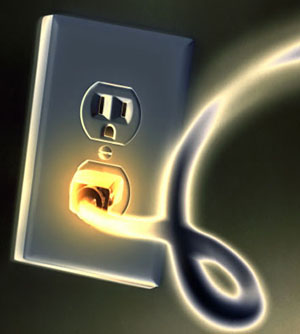 There are electrical circuits in your house, too. Your house is part of a larger circuit that is connected to the power supply of a power company. The amount of electricity flowing through your home at any moment depends on the number of appliances that are all working at the same time.
There are electrical circuits in your house, too. Your house is part of a larger circuit that is connected to the power supply of a power company. The amount of electricity flowing through your home at any moment depends on the number of appliances that are all working at the same time.
The total amount of electricity that flows through your house is determined by the amount of current being used (the sum of the current being used by each appliance) and the voltage of your home circuit.
Within each home, there are usually smaller circuits which are wired to the larger circuit running into the home. These smaller circuits control certain areas of the home. For instance, there may be a circuit for the upstairs bedrooms, another for the kitchen, and another for the outdoor lights. These are all connected in your circuit breaker (probably in your basement).
When there are a lot of appliances turned on at the same time in your house, a lot of electric current flows through the wires of your house. When large amounts of current pass through a wire, the wire heats up. If it gets too hot, it can cause materials nearby to heat up and catch fire. It is therefore very important that wires in your house carry only as much electrical current as they can safely carry without getting overheated.
Home electricity
Is the amount of electricity flowing through your home the same all the time?
No, the amount of electricity flowing through your home changes with the number of appliances being used.
